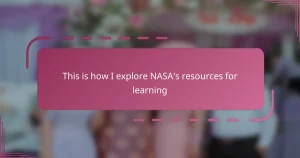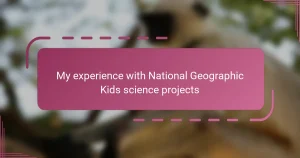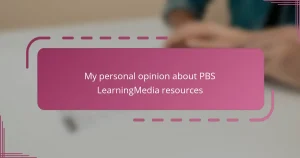Key takeaways
- TED-Ed lessons promote curiosity and creativity in children, making complex ideas accessible through engaging storytelling.
- These lessons enhance critical thinking and language development, encouraging children to ask questions and expand their vocabulary.
- Integrating TED-Ed into daily routines fosters deeper conversations, turning educational moments into shared adventures.
- Tracking progress helps customize future lessons and build a sense of accomplishment in children as they demonstrate understanding.
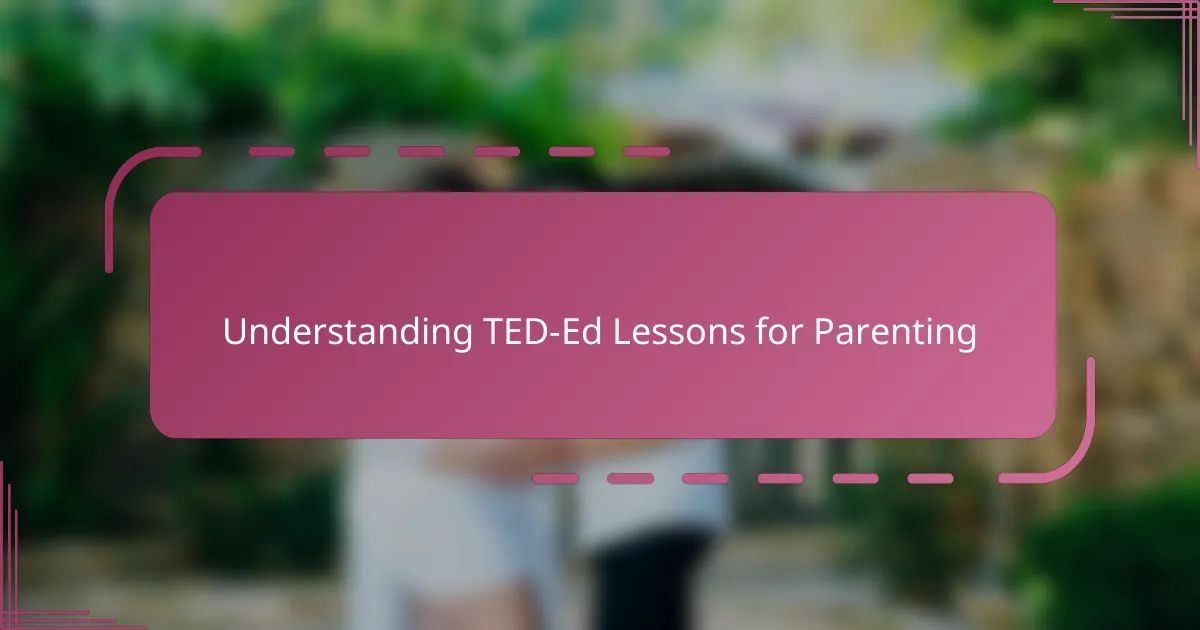
Understanding TED-Ed Lessons for Parenting
I find that TED-Ed lessons offer a unique way to tap into my child’s curiosity. They are not just short videos; they are carefully crafted stories that make complex ideas accessible. Have you ever noticed how a well-told story can change the way your child sees the world? For me, TED-Ed lessons do exactly that—they open up conversations that might not happen otherwise.
What I appreciate most is how these lessons balance education with creativity. Sometimes, as a parent, I struggle to explain tricky concepts in a way that feels engaging rather than overwhelming. TED-Ed takes the pressure off by combining animation and expert narration. It’s like having a knowledgeable friend who delivers information with a touch of fun.
Understanding the purpose behind TED-Ed content helps me choose lessons that resonate with my child’s interests and developmental stage. I ask myself: Will this spark their imagination or introduce new ideas without confusion? This thoughtful approach has made our learning time more meaningful and less of a chore, turning moments of parenting into opportunities for shared discovery.
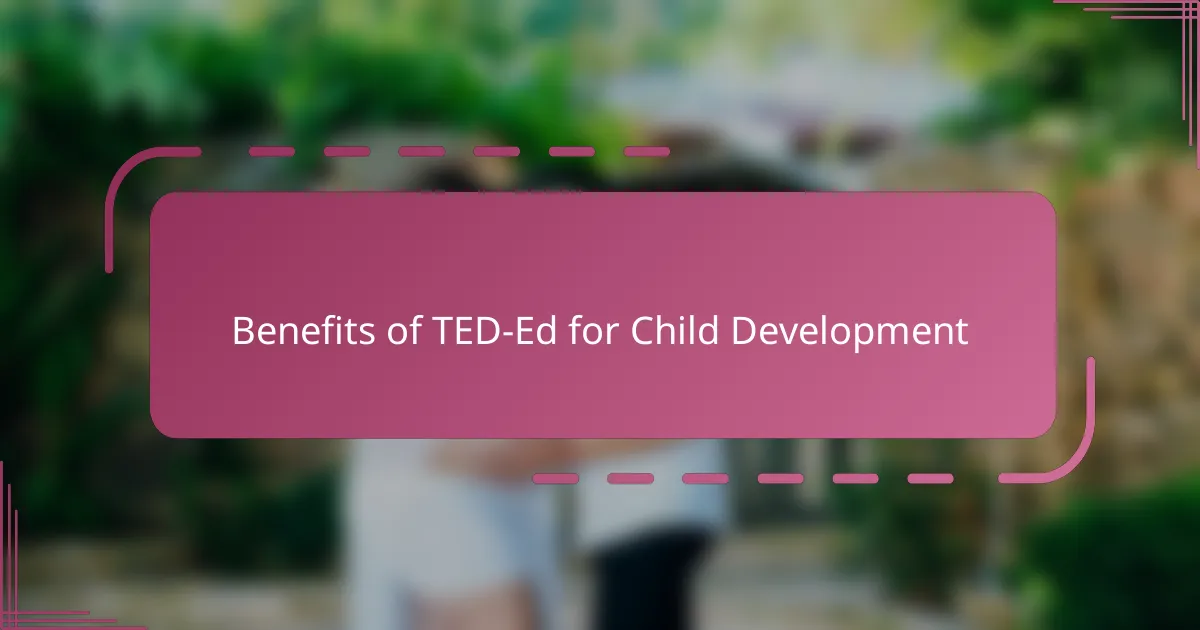
Benefits of TED-Ed for Child Development
One of the biggest benefits I’ve seen from TED-Ed lessons is how they boost my child’s critical thinking skills. When a video ends, my kid starts asking “why” and “how” questions that go beyond the lesson itself. It’s amazing to watch curiosity shift from passive watching to active learning.
I also notice that TED-Ed helps with language development in subtle ways. The way concepts are explained encourages my child to expand their vocabulary without feeling like it’s a lesson. Have you ever caught your child using a new word they picked up from a video? Those moments feel like little triumphs that make me more confident in the tool.
Lastly, TED-Ed lessons create easy entry points for discussing emotions and social topics. Sometimes lessons aren’t just about science or history—they touch on empathy and perspectives. This has helped me open up meaningful conversations with my child that strengthen our connection, which I value deeply in parenting.
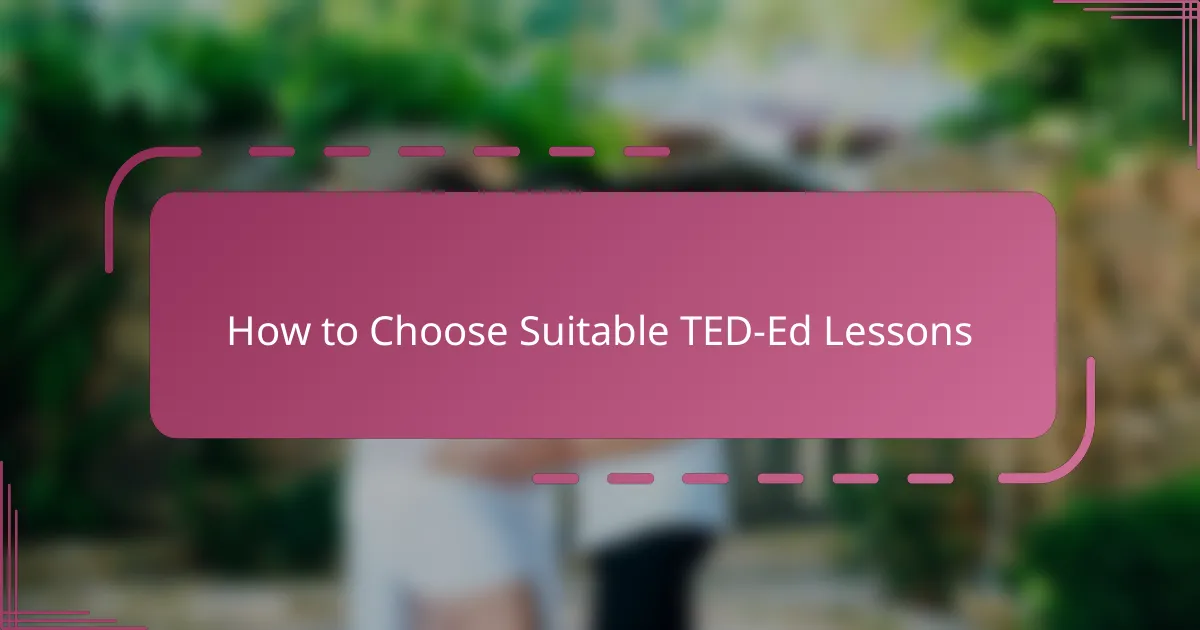
How to Choose Suitable TED-Ed Lessons
When I pick a TED-Ed lesson, I always start by thinking about what my child is curious about at that moment. Have you ever noticed how interest can be fleeting? Choosing a topic that matches their current questions makes the lesson feel relevant and exciting, not like another task on a to-do list.
I also look at the lesson’s length and complexity. Sometimes I opt for shorter videos when time is tight or when my child needs something light. Other times, we dive into more detailed lessons together, pausing to explore ideas or look up tricky words. This flexibility keeps the experience enjoyable rather than overwhelming.
Finally, I check to see if the lesson invites discussion. Does it spark questions or offer real-world examples we can relate to? I’ve found that lessons prompting conversation turn learning into a shared adventure, strengthening our bond in ways a simple video can’t. What about you—do you find certain topics naturally lead to deeper talks with your child?
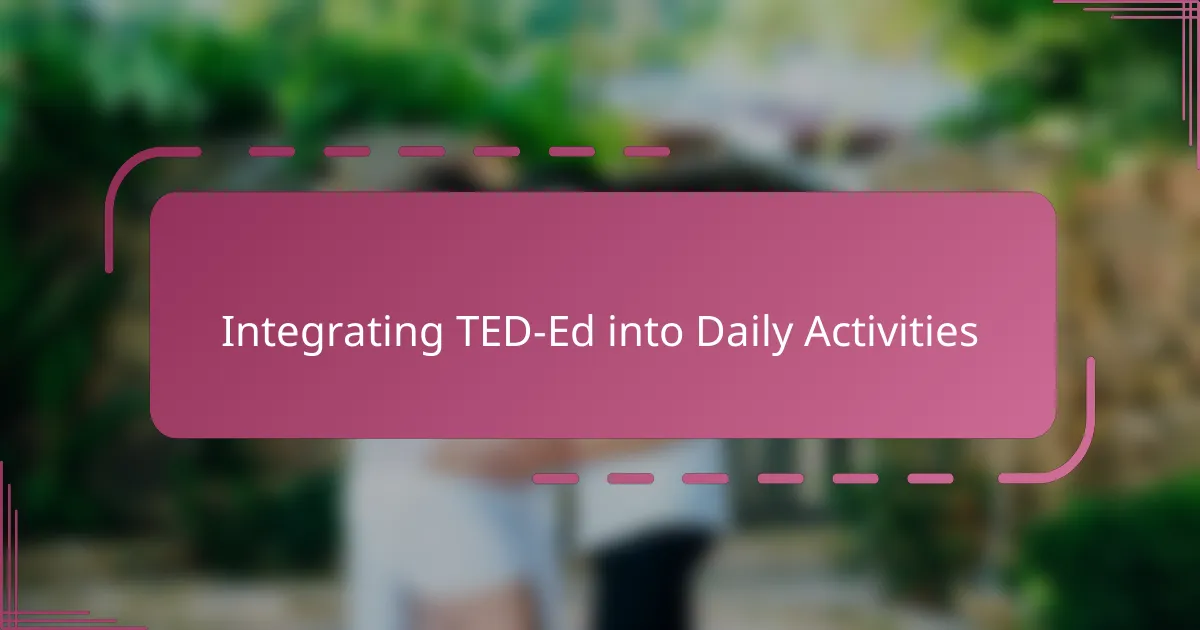
Integrating TED-Ed into Daily Activities
Integrating TED-Ed lessons into our daily routine has been surprisingly effortless. I often play a quick video during breakfast or right before bedtime, turning those moments into mini learning sessions without needing extra planning. Have you ever felt pressed for time yet wished you could sneak in a bit of meaningful education? TED-Ed lets me do just that.
Sometimes, I use lessons as springboards for hands-on activities. After watching a video on ecosystems, for instance, we took a nature walk to observe insects and plants nearby. This blending of screen time with real-world exploration really deepens my child’s understanding and keeps their excitement alive throughout the day.
What’s truly transformed our days is making TED-Ed a natural part of conversation. My child often references a lesson when asking questions or solving problems, which shows me how these short clips stick with them beyond the screen. Isn’t it rewarding when learning feels so integrated, it becomes part of everyday thinking?
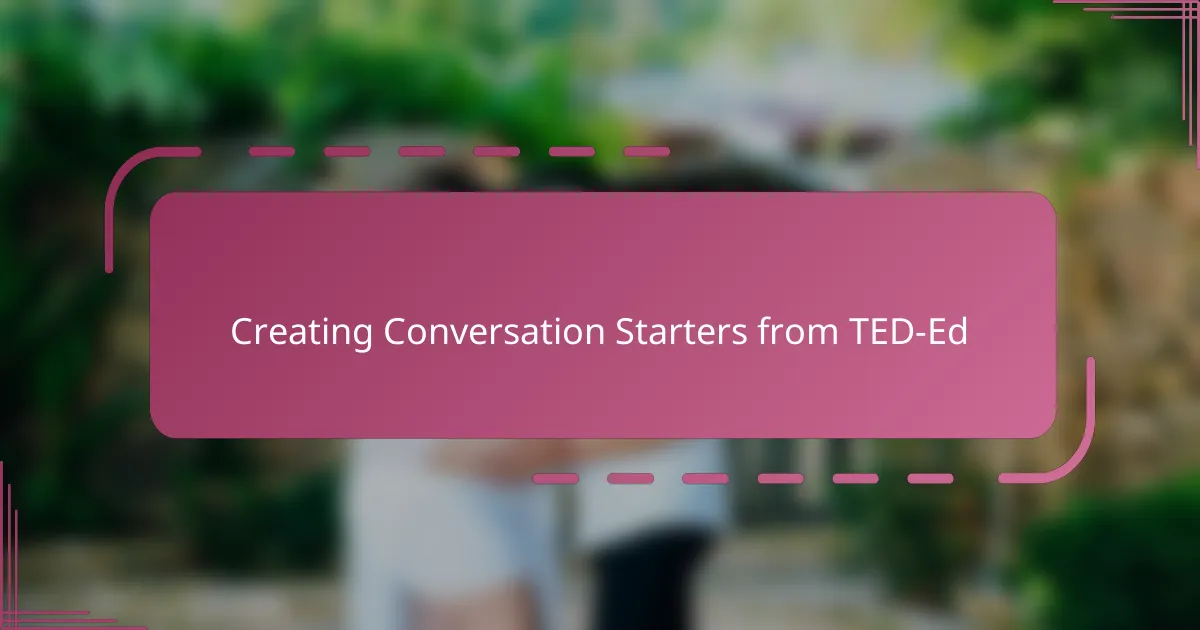
Creating Conversation Starters from TED-Ed
When I watch a TED-Ed lesson with my child, I like to pause at moments that seem ripe for discussion. Have you ever felt that sudden spark when your kid asks, “Why does that happen?” right after a video? Those instances become perfect conversation starters, opening the door to deeper exploration and shared curiosity.
Sometimes, I’ll ask open-ended questions like, “What would you do if you were in that situation?” or “How do you think this idea connects to something we see every day?” These questions not only invite my child to think critically but also reveal their unique perspective, which I find incredibly insightful as a parent.
Creating these dialogue opportunities feels like crafting little bridges between screen time and real life. It’s rewarding to watch my child’s thoughts unfold as we connect the dots together, turning a simple lesson into a meaningful conversation that sometimes lasts well beyond the video’s end.
![]()
Tracking Your Child’s Progress with TED-Ed
Tracking my child’s progress with TED-Ed lessons has become surprisingly straightforward. I often revisit lessons we’ve watched before and notice how much more detailed their questions have become, which tells me they’re really absorbing the content rather than just watching passively. Have you ever caught your child explaining a concept back to you in their own words? That moment of understanding is a clear sign of growth.
To keep track more systematically, I sometimes jot down notes on what topics spark the most interest or where they seem to struggle. This helps me tailor future lesson choices and even suggest related activities to reinforce their learning. Tracking progress this way turns our TED-Ed time into a personalized journey instead of random viewing.
What strikes me most is how this process naturally builds confidence. When my child sees their own progress—like solving problems or sharing ideas inspired by a lesson—they feel proud, and so do I. It’s a simple reminder that meaningful learning can happen in small, enjoyable steps.
